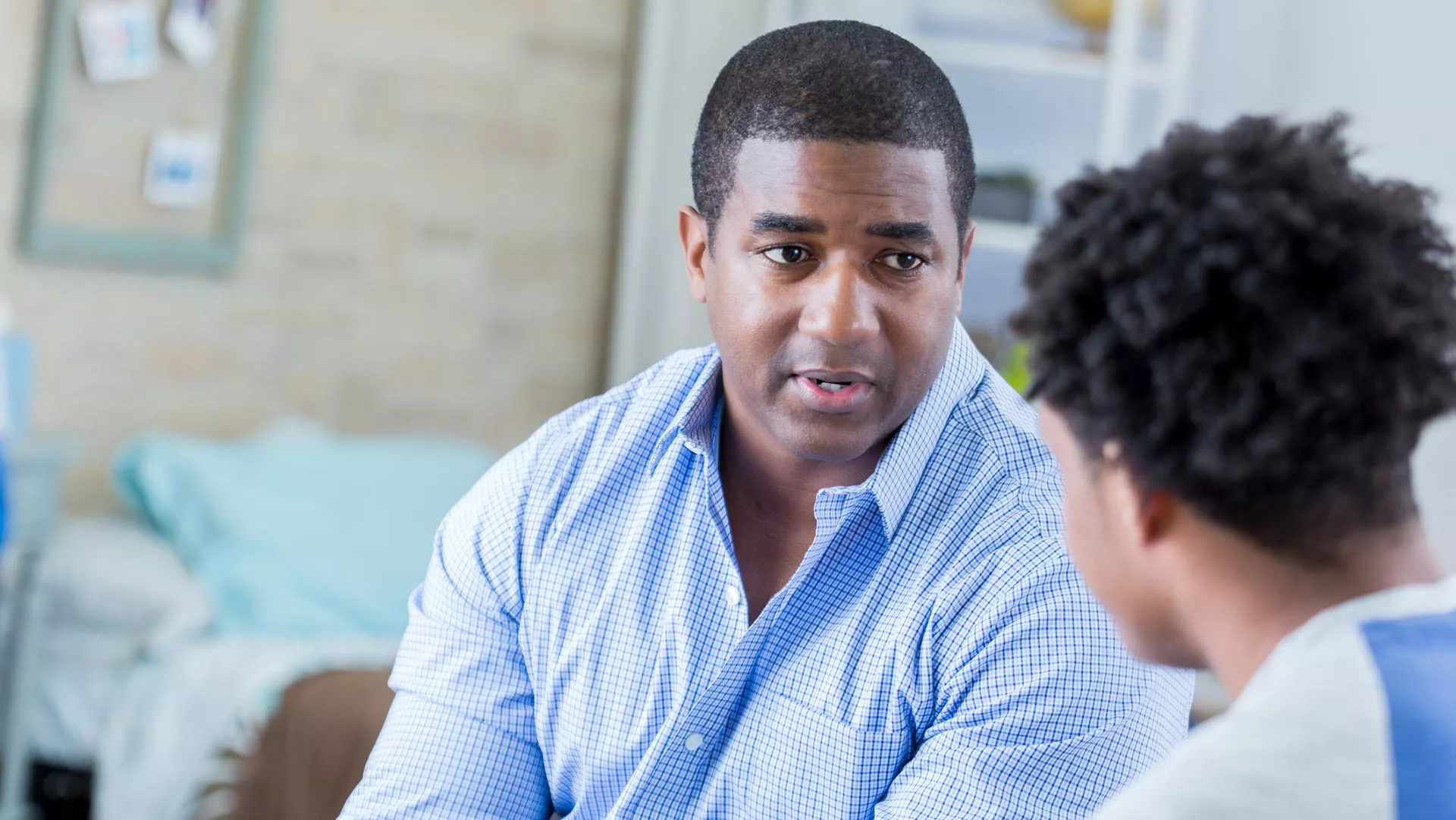The spread of COVID-19, the illness caused by the novel coronavirus, has disrupted the daily routines of many families. Because of the widespread school building closures related to COVID-19, many families must find ways to ensure the continuation of their children’s education as well as make adjustments to their work and child care routines. The needs of children and their families vary greatly. Public schools provide a wealth of support services and resources that students and families must now seek out. The purpose of this resource is to provide information on some of the most critical issues that families must address as they adapt to this new landscape.
5 THINGS YOU SHOULD DO
Talk to your children about COVID-19. They need to hear about the coronavirus from someone they trust. In addition to experiencing the impact of the novel coronavirus, your children are also hearing and reading about it. Talk to your children1 in a developmentally appropriate manner; they need your support and an opportunity to share concerns. It is also essential to emphasize the importance of social distancing and healthy habits2 to keep safe.
Address racial bias issues directly. Recognize that this is a teachable moment: Explain to your children that no matter the origin of COVID-19, this is not anyone’s fault. We must emphasize that the virus can make anyone sick, regardless of race, ethnicity, or cultural background. Unfortunately, COVID-19 disproportionately affects communities of color due to a myriad of underlying systemic inequities. We must help our children understand that many of these inequities are the result of long-standing racial bias3, and we must teach them to be kind and compassionate in all interactions and recognize and respond appropriately to prejudice.4
Seek out accurate information on your children’s school and related programs. The duration of school building closures varies across and within states. Most state education agency sites have a dedicated page for COVID-19 related information that includes frequently asked questions for parents and families, distance learning information, nutrition and meal service information, and learn at home resources. Nutrition programs5 and distance learning programs6 can vary significantly by district; keep in touch with your children’s educators, school, and the district office for information that is specific to your student. Be prepared to ask questions about access to resources and learning materials, grading policies, opportunities for remediation, meeting the needs of students with disabilities, graduation requirements, and nutrition and meal service.
Recognize and attend to stressors and emotional needs. Changing circumstances can create significant stressors within families. Children need help managing their stress; in many schools, social emotional learning (SEL) practices are embedded in all aspects of learning. SEL practices help children learn to manage emotions, establish positive relationships, and make responsible decisions. Parents can bring these same SEL principles home7 to help students cope with the effects of social distancing and additional stressors in the home.During school building closures, educators no longer have regular contact with students to assess their safety and well-being; the result is a decrease in child abuse reporting and an increase in occurrences of severe cases of child abuse in emergency rooms. Increased stress levels among parents is often a predictor of physical abuse and neglect of children. Parents should recognize the signs of abuse8 and engage in self-care activities9 to help cope with the added stresses and lessen the chances of negative interactions. During this crisis, the incidence of domestic abuse has risen significantly. If you are experiencing domestic violence, contact the National Domestic Abuse Hotline at 1-800-799-SAFE.
Help your student maintain a learning routine. Many schools are relying on distance learning models for education continuity. While distance learning cannot replace the traditional school-based learning experiences provided by professional educators, it is important to keep students engaged in developmentally appropriate learning activities10 until schools reopen. School approaches to providing learning materials vary widely: Some districts provide instruction and resources through virtual learning environments, and others provide hard copies of learning materials. Keep in contact with your student’s school leaders and educators to ensure that your student has access to appropriate learning materials.Structure is a good way to reduce stress associated with out-of- school learning. Keeping regular bedtime routines ensure that students get enough sleep and are better prepared to learn. In setting routines11, some key considerations are to configure learning space to minimize distractions, provide needed materials, schedule regular breaks, and determine how family members will utilize shared technology. Set aside time to explain assignments and remember that even the best students struggle with instructions and assignments. Be flexible; learning should be fun and should include arts, music, and physical activity.
ADDITIONAL RESOURCES
1 “Helping Children Cope with Changes from COVID-19.” (March 2020). National Association of School Psychologists. Retrieved from nasponline.org/resources-and-publications/resources-and-podcasts/school-climate-safety-and-crisis/health-crisis-resources/helping-children-cope-with-changes-resulting-from-covid-19.
2 “Prevent Getting Sick.” (April 2020). Centers for Disease Control and Prevention. Retrieved from cdc.gov/coronavirus/2019-ncov/prevent-getting-sick/index.html.
3 “Talking to Children About Racial Bias.” (July 2019). American Academy of Pediatrics: Healthy Children. Retrieved from healthychildren.org/English/healthy-living/emotional-wellness/Building-Resilience/Pages/Talking-to-Children-About-Racial-Bias.aspx.
4 “Beyond the Golden Rule: A Parent’s Guide to Preventing and Responding to Prejudice.” (September 2005). Teaching Tolerance: Southern Poverty Law Center. Retrieved from tolerance.org/sites/default/files/general/beyond_golden_rule.pdf.
5 “Educators Nationwide Feed Students During COVID-19 Closures.” (March 2020). NEA Today. Retrieved from neatoday.org/2020/03/21/keeping-students-fed-during-coronavirus/.
6 “NEA Policy Statement on Digital Learning.” (February 2020). NEA Today. Retrieved from neatoday.org/2020/02/26/nea-policy-statement-on-digital-learning/.
7 “10 Ways Parents Can Bring Social Emotional Learning Home.” (April 2020). EdSurge. Retrieved from edsurge.com/news/2020-04-02-10-ways-parents-can-bring-social-emotional-learning-home.
8 “What Is Child Abuse and Neglect? Recognizing the Signs and Symptoms.” (April 2019). Child Welfare Information Gateway. Retrieved from childwelfare.gov/topics/can/identifying/.
9 “Stress and Coping.” (April 2020). Centers for Disease Control and Prevention. Retrieved from cdc.gov/coronavirus/2019-ncov/daily-life-coping/managing-stress-anxiety.html.
10 “Schools Are Closed Minds Are Open.” Common Sense. Retrieved from wideopenschool.org/.
11 “Working and Learning from Home During the COVID-19 Outbreak.” (April 2020). American Academy of Pediatrics: Healthy Children. Retrieved from healthychildren.org/English/health-issues/conditions/chest-lungs/Pages/Working-and-Learning-from-Home-During-the-COVID-19-Outbreak.aspx.
Downloads
Stay on top of current education news



